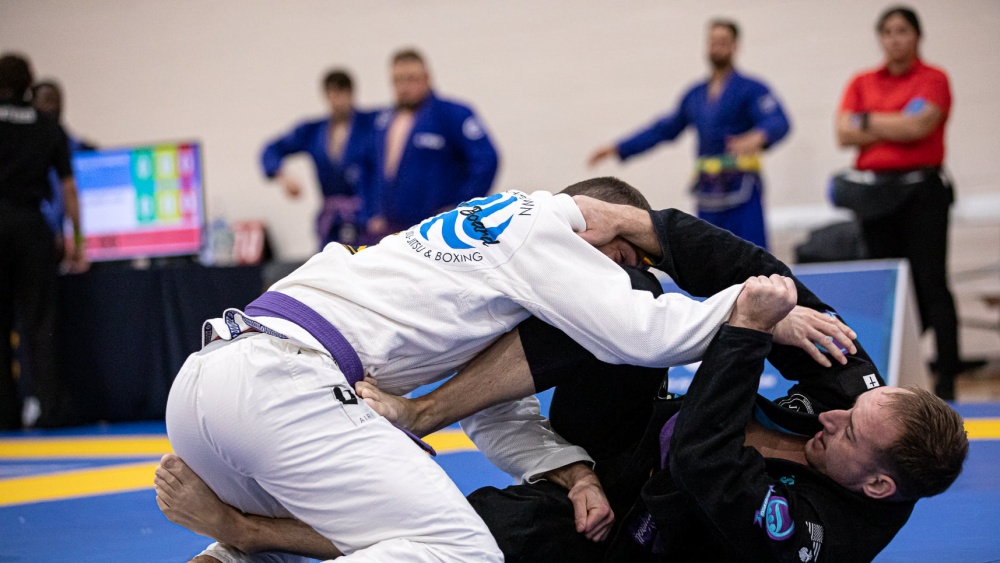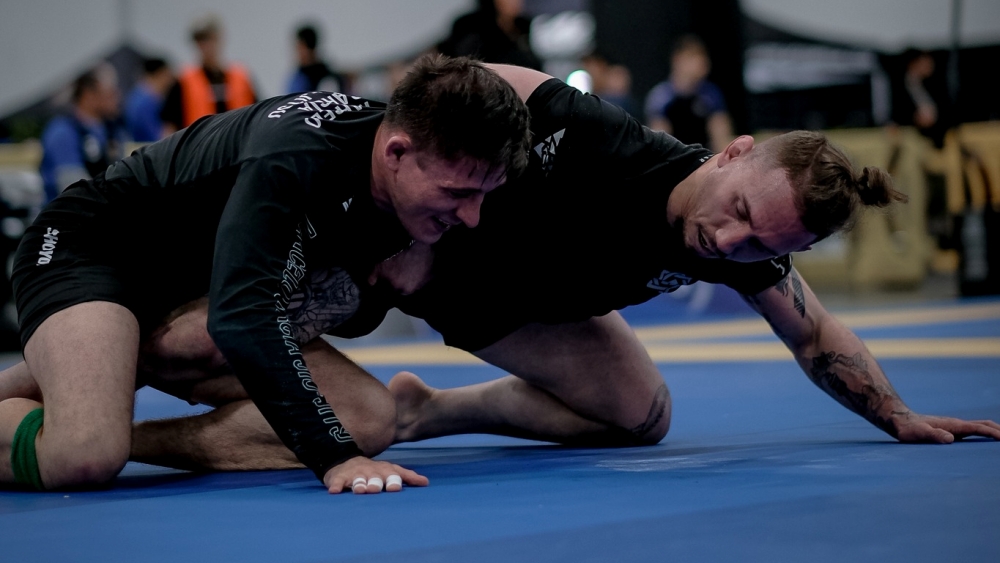There are different types of guards in BJJ. Included in these guards are slight variations of the other guards. Take the half guard, for example. The half guard is already a type of guard in itself, but it also consists of different variations, each with its own unique attribute. This article will discuss one variant of the half guard known as the Z guard.
What Is The Half Guard?
There have been many developments in BJJ throughout the years, from submissions, transitions, and guard play. Perhaps the one aspect that has seen the most significant leap in development is the focus on various guards. Back in the day, most BJJ practitioners focused on the closed guard as the foundation of their game. As a beginner, you were probably first taught about the closed guard as well; it is with good reason because it is a highly effective guard and is as fundamental as it gets.
Although the closed guard is already pretty solid, it is not perfect. At some point, you may still get your guard passed. The development of the half guard happened when practitioners cracked the code on passing the closed guard.
The half guard is where the bottom player traps an opponent’s leg and uses both legs to control and limit movement. Depending on the type of half guard, you can either work very close (deep half) or away from your opponent (Z guard, knee shield). It was developed and made famous by Roberto “Gordo” Correa in the 1990s, back when he was a purple belt. He was the one that revolutionized the position by filling the gap between defense and offense.
What Is The Z Guard?
The Z guard is a type of half guard and is often mistaken as the knee shield half guard. The Z guard is when you lay on a half guard position with your bottom leg deeply hooking the opponent’s near leg, and your upper leg blocking near the hip using your knee. Your feet should connect, and your knee should be placed on the top of the thigh to prevent the opponent from collapsing your structure.
Unlike the knee shield half guard, where it is easier for the opponent to pass when he smashes your knees together, the Z guard is trickier to smash as your feet are connected to each other. This makes it hard for your opponent to pass. When doing the Z guard, keep in mind to curl the opponent’s leg with your bottom hooking leg and push their hips with your top knee. This will force the opponent to sit on their heels. This small sequence can give you opportunities to attack.
The Z Guard And Other Type Of Half Guards
As mentioned above, the Z guard is similar to the knee shield, but the knee is at the hip, trapping the thigh of the opponent with your feet. The knee shield is when the top knee is in front of the opponent’s body (typically near the upper chest or shoulder), preventing your opponent from moving forward.
Gustavo Gasperin from MMA Leech shows the essential details of setting up the Z guard. He also shares its main difference with the knee shield. The Z guard is first set up by performing a knee shield with your top leg to block the hip of the opponent while crisscrossing your feet. This prevents your opponent from leaning forward. The connection of your feet is important, as well as the framing of your top knee on the hip of the opponent. This is because it prevents your knees from connecting with each other, allowing you to cross your feet.
One weakness of the knee shield is its reliance on the structure created by your knee and arm. Your opponent can collapse the knee shield by forcing your knees to touch. This is usually done by using a smash pass.
A full knee shield, or the upright knee shield, is when the shin is perpendicular to the mat from the hip area up to the near shoulder of the opponent, with the foot pressing into the hip.
The butterfly knee shield, made famous by Gordon Ryan and Craig Jones, is also an upright knee shield. The main difference is that the shielding leg’s foot is inside the opponent’s thigh, acting as a butterfly hook.
Deep half guard is where you’re directly under the opponent’s hips, making it the closest range type of half guard. The lockdown half guard, made popular by Eddie Bravo, is where you place your outside leg on top of the opponent’s entangled leg instead of your inside leg.
Submissions From The Z Guard
The Z guard became popular because of its ability to apply constant threats for sweeps and submissions. Craig Jones, a master of the Z guard, is perhaps one of the first athletes you should check if you’d like to explore this guard.
Let’s look at two submissions from the Z guard.
1) Armbar
In this video, Craig Jones shows a cool armbar from the Z guard. If your opponent decides to pressure forward, you can apply a crossface and pull the opponent’s shoulder down with a butterfly grip (around the shoulder height if possible). Break the opponent’s posture by pulling them down, swing your leg and apply a knee shield over the head while keeping the opponent’s shoulder as low as possible. Do this with your hip facing forward. This will rotate the opponent’s thumb. From here, pummel your foot straight inside for the armbar. You can finish the armbar without removing the hooking bottom leg on the half guard.
2) Kimura
In this video, Tom Davey from The Grappling Academy shows a kimura from the Z guard. Apply a crossface with your top arm and control the opponent’s wrist with your bottom arm. From here, kick your leg through and move your body up (your navel should be near your opponent’s forearm), and snatch the kimura.
Get your butt off the mat and arch your back to finish the submission. If the opponent defends by tucking their arm, perform a hip bump sweep by keeping your hooking bottom leg, and push the mat with your upper leg.
Conclusion
The Z guard, like other types of guards, is an important weapon to add to your arsenal. It is crucial to have at least one half guard variant in your game so that you’ll be able to transition from a closed game to a more dynamic one in a snap. Try the Z guard, and let us know how it goes!
You may also like:

















